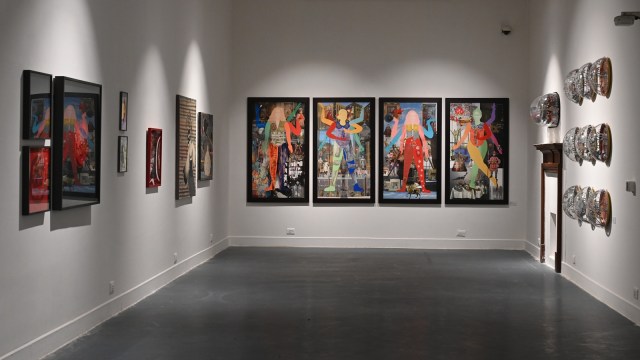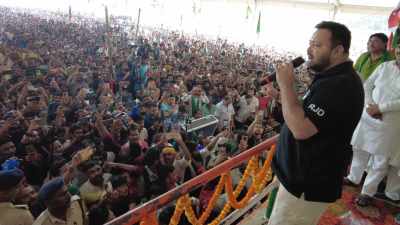Where time curves and memory takes form
In the exhibition "Between the Strands, Time Bends & Warps", curator Meena Vari brings together established and emerging artists to explore the ever-shifting landscape of artistic practice
 The exhibition "Between the Strands, Time Bends and Warps" at Delhi's Bikaner House unfolds like a tapestry of memories, materials and meaning to celebrate 20 years of Gallery Ragini
The exhibition "Between the Strands, Time Bends and Warps" at Delhi's Bikaner House unfolds like a tapestry of memories, materials and meaning to celebrate 20 years of Gallery RaginiAt the CCA building in Bikaner House, Delhi, the exhibition “Between the Strands, Time Bends and Warps“ unfolds like a tapestry of memories, materials and meaning – celebrating 20 years of Gallery Ragini. Curated by Meena Vari and on till October 28, the show brings together a spectrum of artists, both established and emerging, to trace a journey that mirrors the evolution of India’s contemporary art scene itself.
“When the gallery first asked me to curate its 20th anniversary show, I knew it had to be something larger than a retrospective… It’s been a long journey for the gallery, and during this same period, contemporary Indian art has also been finding its place internationally. So I thought, why not look at both these journeys together?” says Vari.
That idea of parallel growth and evolution became the foundation of the exhibition. A story of becoming — of how a gallery, its artists, and the art ecosystem around them have transformed. “It is like a parallel journey. Both the gallery and the artists became something… It is like an intergenerational conversation, with young artists shown alongside the established ones,” says Vari.
The exhibition’s title “Between the Strands, Time Bends and Warps“ emerges from that same philosophy. It echoes a sense of movement. Vari explains, “The journey is not straight. It has this thing of going in, coming out. Like stitching – if you keep the thread straight, it will not be anything. You have to put it down, bring it up.”
That act of stitching of looping time and thought runs through the exhibition’s curation. Vari asked each artist to revisit the essence of their practice. “I told them what became of your practice? What idea shifted or accelerated it? I wanted them to reflect on that moment,” she says. The accompanying publication, she adds, gathers these reflections into a document of artistic becoming.
Among the many highlights, Bose Krishnamachari’s work stands out as a continuation of his long engagement with dabbas (metal containers) from Mumbai’s daily life. In this piece, there are also recorded sounds of railway stations and moving trains, evoking the rhythm of the city and its people.
In sharp contrast is a delicate yet powerful piece by Jigmet Angmo from Leh, whose miniature models are created from found minerals and clay. “She’s depicting the fragile ecosystem there. The land is so fragile that it keeps breaking, stones keep rolling down. She’s made small houses perched on fragile bases that can roll down any moment. It’s very poignant,” explains Vari.
Mibin, an artist from Kerala, builds an entirely different landscape, a fantastical terrain that hovers between dream and truth. “At first glance it looks surreal, but the more you look, the more it feels familiar, shaped by the stories and baggage we all carry,” says Vari. Equally compelling is Ayesha Seth’s mixed media collage on plates enclosed in acrylic domes, where feminism takes an imaginative turn. Explaining the piece, Vari says, “She’s talking about gender from a fantastical space. It’s playful and self-aware — she’s making fun of it, while still being serious.”






- 01
- 02
- 03
- 04
- 05

























